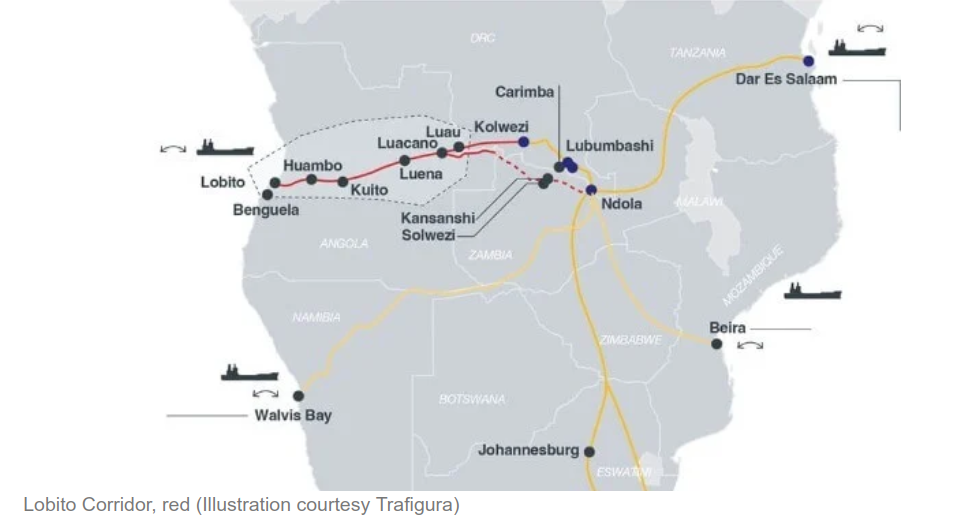
Image:The maritime excutive
The geopolitical chessboard in Southern Africa sees the U.S. and China strategically investing in competing rail corridors, vying for control over the lucrative Copper Belt region that spans Zambia and the Democratic Republic of Congo (DRC). The Lobito Corridor, championed by the U.S., is gaining momentum as a vital trade route to cater to the escalating demand for copper and cobalt minerals crucial for the global green energy push.
Lobito Corridor: A Panacea for Transport Woes
The Copper Belt region, with its vast copper and cobalt resources, faces transport challenges due to unreliable routes, particularly the conventional path to the Indian Ocean port of Durban. The Lobito Corridor offers a promising alternative, reducing the distance to Durban by half. The U.S. and EU, in 2023, signed a Memorandum of Understanding with Angola, DRC, and Zambia, emphasizing their joint commitment to developing the corridor. U.S. government has pledged substantial support for the development of the Lobito Corridor.
Reviving a Century-Old Gateway
Originating from the historical Benguela railway line built between 1902 and 1929 by Belgium and Portugal, the Lobito Corridor has served as a crucial conduit for industrial and agricultural goods from Angola, DRC, and Zambia. Unfortunately, civil unrest in Angola and DRC in the mid-seventies led to the closure of the railway, resulting in underutilization of the Port of Lobito.
Private Sector Involvement Grows
Apart from infrastructure reconstruction, the focus is on encouraging traders and mining companies to utilize the Lobito Corridor. Mining giants Trafigura and Kamoa-Kakula have recently committed to a long-term partnership with the Lobito Railway authority, ensuring the transportation of minerals for at least six years.
Geopolitical Maneuvering for Control
The backing of the Lobito Corridor by the U.S. and EU is seen as a strategic move to counterbalance China’s dominance in the supply chains for critical energy transition minerals. As the West supports the Atlantic route, China is proposing a comprehensive refurbishment of the Tanzania-Zambia railway, aiming for the Indian Ocean route. The geopolitical competition intensifies, with both global powers eyeing a stake in controlling the crucial Copper Belt and securing their positions in the evolving global value chain.
China’s Countermove: Tazara Railway Refurbishment
China, presented a proposal to refurbish the Tanzania-Zambia railway, commonly known as Tazara, with an investment exceeding $1 billion. The railway, built by China in the 1970s, is currently non-operational. The Tanzanian and Zambian governments have signaled their willingness to hand over concessions to a Chinese state-owned company, the China Civil Engineering Construction Corp.
The destinies of the Lobito Corridor and the revamped Tazara railway intertwine, shaping the future of trade routes and the influence of global players in Southern Africa.
Source:The Maritime executive
.

